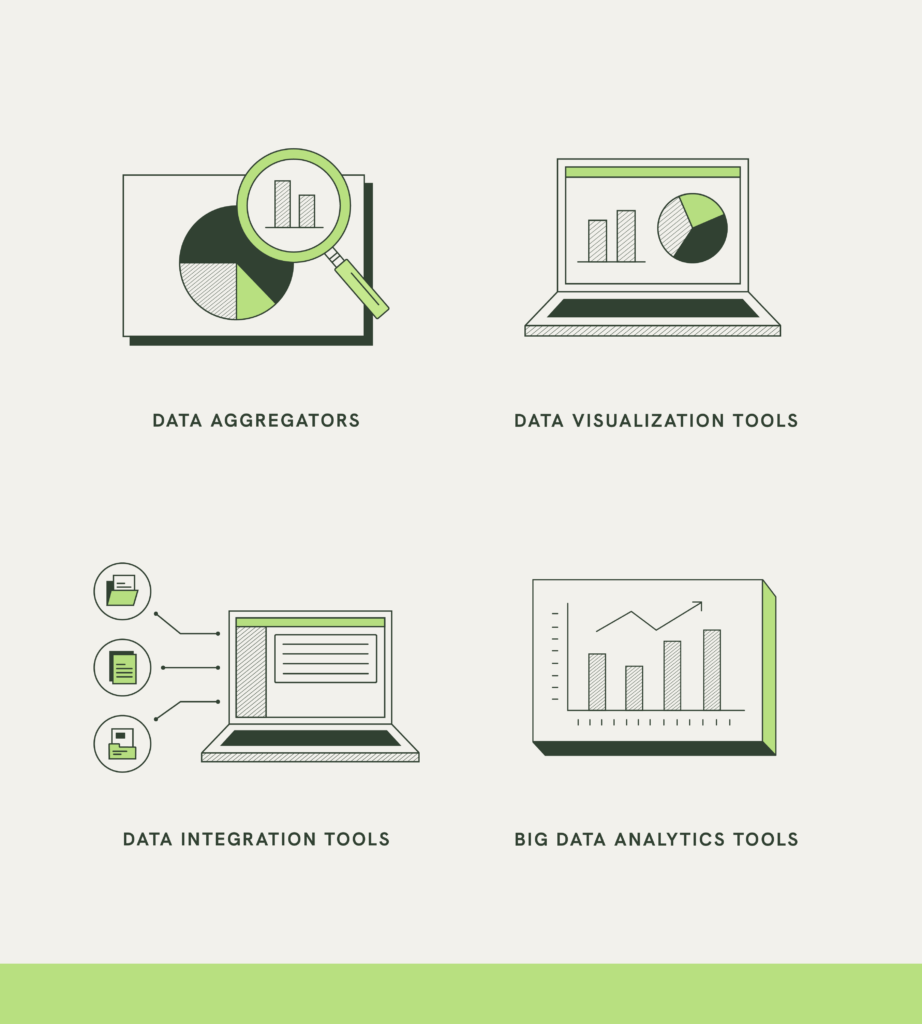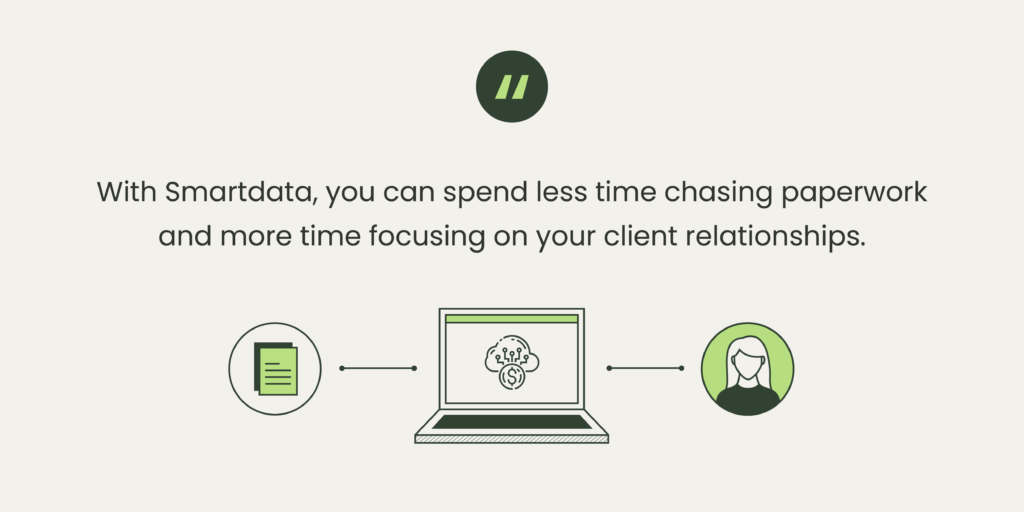Client onboarding is a crucial step in building strong financial relationships, yet it often comes with delays, inefficiencies, and manual processes that slow down your ability to provide value. The traditional back-and-forth of emails, document requests, and data entry creates frustration for both you and your clients, but clean and fast data aggregation plays a crucial role in streamlining these processes.

What if you could streamline onboarding, minimize errors, and gain instant access to a client’s complete financial picture? In this blog, we’ll explore how to approach process creation and software selection to meet those goals.
What is Data Aggregation?
Aggregation data consolidates financial information from multiple sources into a single, easy-to-analyze platform. Aggregation data starts from the most granular level of detail, known as atomic data. Instead of relying on clients to manually submit statements, you can leverage technology to pull in real-time data from bank accounts, investment portfolios, tax documents, and more.
By using aggregation data, you gain a comprehensive financial snapshot that enhances efficiency, reduces paperwork, and eliminates common onboarding bottlenecks.
Why Aggregated Data Matters for You
The traditional onboarding process involves a long checklist of forms, verifications, and data collection steps. These delays not only slow down your ability to provide strategic insights but also test your client’s patience.
Data analysts play a crucial role in leveraging aggregated data to provide strategic insights and enhance the onboarding process.
By leveraging Smartdata, you can:

- Reduce Manual Data Entry – Automated data collection minimizes errors and saves valuable time.
- Speed Up Onboarding – Immediate access to financial details eliminates unnecessary delays.
- Enhance Personalization – A holistic financial picture allows for more tailored strategies and insights.
- Build Client Confidence – Accurate, up-to-date data strengthens trust and improves decision-making.
The Data Aggregation Process
The data aggregation process is a multi-step journey that transforms raw data into actionable insights. It begins with data collection, where information is gathered from various sources such as databases, spreadsheets, and external data providers. This raw data is then meticulously processed and cleaned to eliminate errors and inconsistencies, ensuring a solid foundation for analysis.
Once the data is prepped, it undergoes aggregation using techniques like summation, averaging, and grouping. This step consolidates the data into a more manageable form, making it easier to analyze and interpret. The final stage involves analyzing and visualizing the aggregated data to uncover patterns, trends, and insights that drive informed decision-making.
Organizations can choose between manual and automated data aggregation. Manual data aggregation, while straightforward, is often time-consuming and prone to human error.
Automated data aggregation, on the other hand, leverages advanced data aggregation tools to streamline the process, offering speed and precision that manual methods simply can’t match. By automating the data aggregation process, businesses can efficiently handle data from multiple sources, ensuring timely and accurate insights.
Data Aggregation Tools and Technologies
In the realm of data aggregation, a variety of tools and technologies are available to help organizations efficiently collect, process, and analyze data from multiple sources. These tools are designed to simplify the data aggregation process, making it more efficient and effective.

- Data Aggregators: These platforms are essential for collecting and processing data from diverse sources. Popular data aggregators include Google Analytics, Mixpanel, and Splunk, which provide comprehensive solutions for data collection and analysis.
- Data Integration Tools: Integrating data from multiple sources into a single platform can be challenging, but tools like Talend, Informatica, and Microsoft Power BI make it seamless. These tools ensure that data from various origins is harmonized and ready for analysis.
- Data Visualization Tools: Once data is aggregated, visualizing it is crucial for gaining insights. Tools like Tableau, QlikView, and D3.js excel in presenting aggregate data in an intuitive and interactive manner, helping organizations make data-driven decisions.
- Big Data Analytics Tools: For organizations dealing with vast amounts of data, big data analytics tools like Hadoop, Spark, and NoSQL databases are indispensable. These tools are designed to handle large-scale data analysis, providing deep insights and supporting predictive analytics.
By leveraging these data aggregation tools and technologies, organizations can efficiently manage and analyze data from multiple sources, driving better business outcomes.
How Smartdata is Leading the Charge as Data Aggregators
Not all aggregation tools are created equal. Smartdata sets a new standard by offering financial professionals a seamless, secure, and automated way to streamline onboarding. Our innovative technology integrates account details and tax records with patent-pending workflows, eliminating the need for manual input and providing real-time insights with unmatched precision.
Data scientists can leverage Smartdata’s innovative technology to streamline onboarding and provide real-time insights with unmatched precision.

Overcoming Data Aggregation Challenges
While data aggregation offers numerous benefits, it also presents several challenges, especially when dealing with large volumes of data from multiple sources. Addressing these challenges is crucial for ensuring the accuracy and reliability of aggregated data.
- Data Quality Issues: Poor data quality can significantly impact the accuracy of aggregated data, leading to incorrect insights and decisions. Implementing robust data quality checks and validation processes can help mitigate these issues.
- Data Integration Challenges: Integrating data from various sources with different formats and structures can be complex. Utilizing advanced data integration tools and strategies can streamline this process, ensuring seamless data consolidation.
- Scalability Issues: As the volume of data grows, the data aggregation process can become resource-intensive. Adopting scalable data aggregation tools and technologies can help organizations efficiently manage large datasets without compromising performance.
- Security and Privacy Concerns: Aggregating data, especially sensitive information, raises security and privacy concerns. Implementing stringent security measures and compliance protocols is essential to protect data integrity and confidentiality.
By leveraging advanced data aggregation tools and technologies, organizations can overcome these challenges and ensure a smooth and efficient data aggregation process. This not only enhances the quality of insights but also supports informed decision-making and strategic planning.
The Future of Client Onboarding with Data Aggregation
It’s 2025. Clients expect a seamless, tech-driven experience. Any more, aggregation data isn’t just a convenience—it’s becoming a necessity for firms that want to remain competitive. Advanced data mining techniques can further enhance the onboarding process by uncovering valuable insights from aggregated data.
By adopting cutting-edge tools like Smartdata, you can upgrade your onboarding process, enhance efficiency, and build stronger client relationships from day one.







